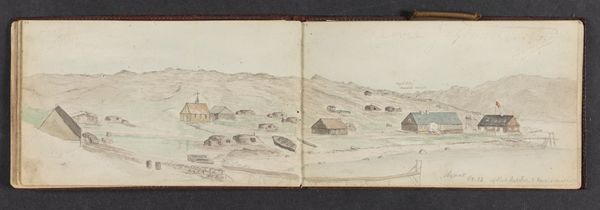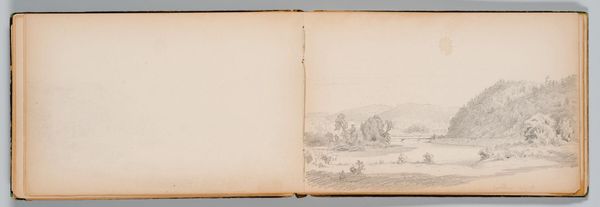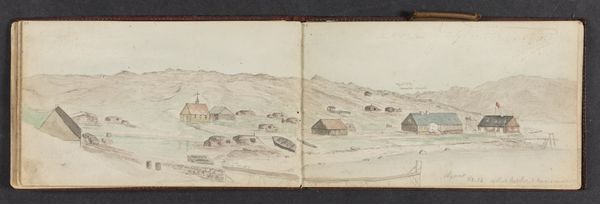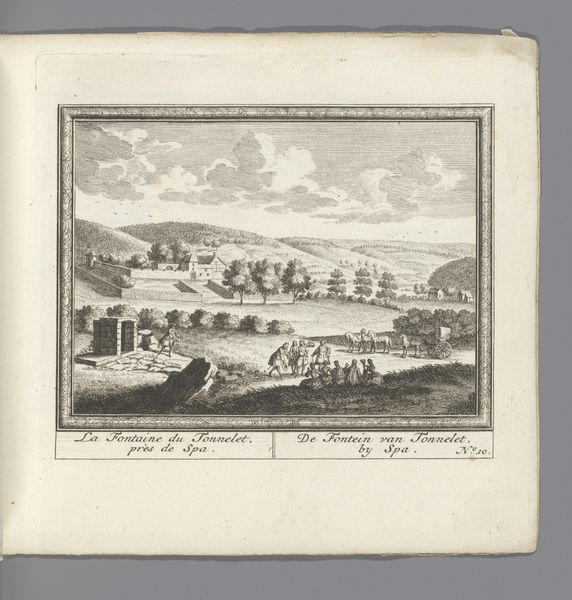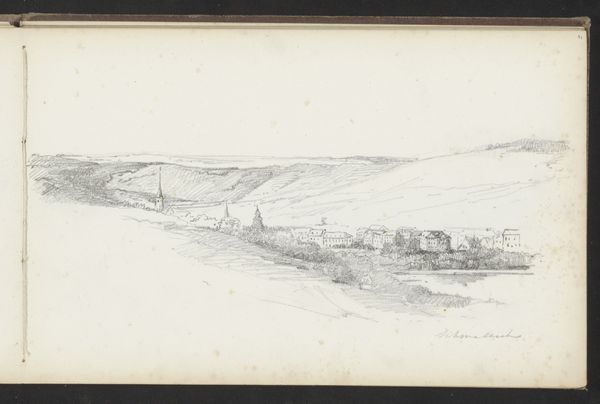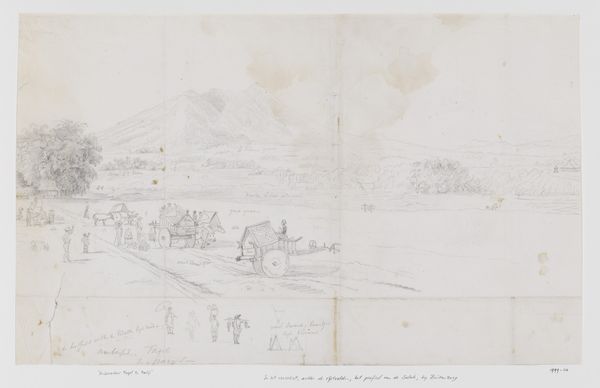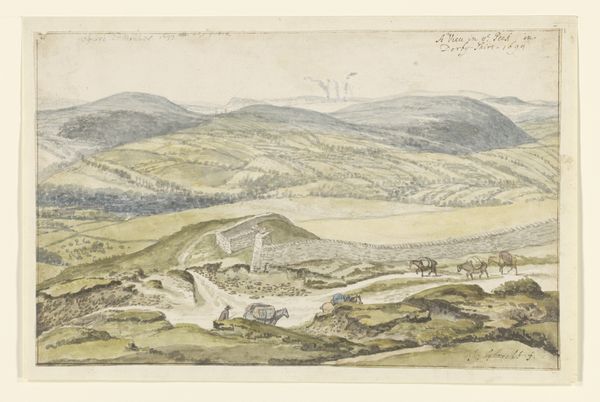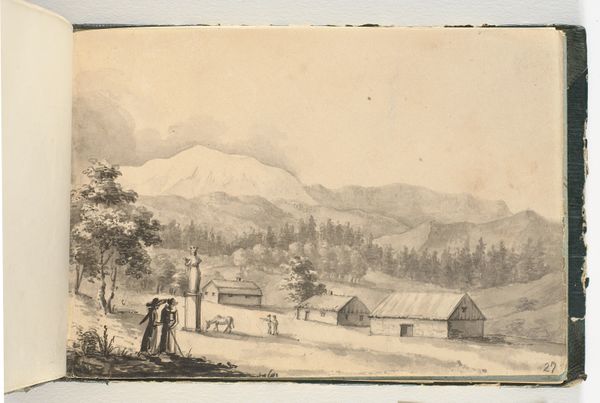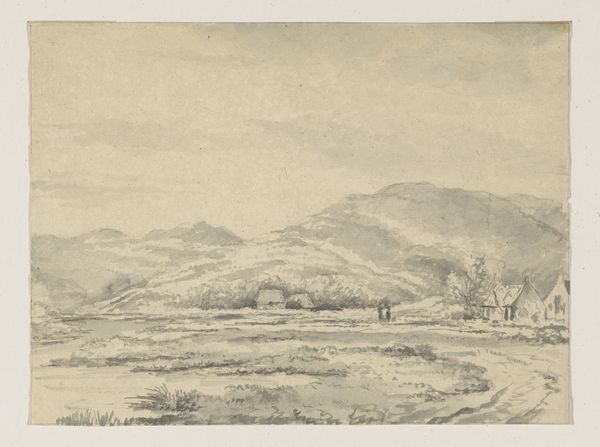
drawing, paper, pencil
#
drawing
#
dutch-golden-age
#
landscape
#
paper
#
coloured pencil
#
pencil
#
realism
Dimensions: height 148 mm, width 196 mm
Copyright: Rijks Museum: Open Domain
Curator: Here we have Esaias Boursse's pencil and coloured pencil drawing, “View of the Malwana fortress, with a warehouse and church,” dating from 1662. My first impression? A quiet, colonial stillness hangs in the air. The pale greys and subtle tints lend it an almost ghostly quality, despite the everyday scene unfolding. Editor: The ‘everyday’ scene is exactly where the tension lies, isn't it? Boursse’s illustration, rendered in soft greys, natural browns, and delicate green, depicts a Dutch trading post during a dark period of colonial expansion. I can't help but wonder about the labour behind the fortress. Curator: Of course. And the figures, mostly faceless, are almost like ghosts themselves. What do you make of the architecture depicted, particularly the contrast between the solid fortress and the more humble warehouse and church? There’s a subtle gradation here, from a space of clear subjugation and enforced power structures to sites where maybe trade is just business, or spiritual healing can begin? Editor: This composition highlights colonial power dynamics beautifully. That contrast mirrors the artificial imposition of European social hierarchies and trade interests onto pre-existing systems. Curator: It’s almost cinematic in how it captures a very particular moment—the kind of humid, waiting energy of midday heat and activity suspended for a time. I love how Boursse has captured so much atmosphere with such simple means. The scene looks mundane, but there's obviously much going on, like what each person in the composition does and who these figures were in relationship to each other? Editor: Exactly. A simple sketch might speak volumes when it contextualized properly. Boursse unwittingly illustrates the complex interactions and lasting impacts of this initial European intrusion. And he was involved himself, of course! As a painter sailing on Dutch East India Company ships, his livelihood, and the perspective of this picture are also inextricably linked to it. Curator: I find myself wanting to give the characters names, make them more fully dimensional in my mind. Boursse certainly inspires the act of wondering about the story beyond what's visibly depicted on the surface. Editor: Indeed, the deceptive quietude is perhaps the most compelling and disturbing thing. It demands we consider the layers of power encoded even in something as apparently neutral as a landscape sketch from this period. Curator: Precisely. This small scene unlocks so much broader insight when we engage with these deeper cultural histories. Editor: It serves as a haunting reminder of the embedded violence behind these “picturesque” scenes from the past.
Comments
No comments
Be the first to comment and join the conversation on the ultimate creative platform.
